
Trailing stop limit. Market on close. Contingent orders. There are over 20 different order types available on the thinkorswim platform. Some are more complex than others, and you might believe that the more complex the order, the more “professional” or useful it is. Right? Well, sometimes yes. Sometimes no. The key is to understand how these orders work before you use them in live trading.
All orders, however complex, can be seen as variations on two basic themes: market and limit orders. A market order guarantees a fill but not a price. A limit order guarantees a price but not a fill. Period. The other 18 order types attempt to make your life a little easier, but they’re not meant to replace a real person monitoring positions. Let’s dive into the world of order types and learn how to manage them properly.
MARKET ORDER • With a market order, the broker is allowed to execute the order without regard to price or time. The broker will fill the order. But in exchange for that certainty, you have no idea what price you’ll get, or what time the order will be executed. In the world of electronic trading, the time until execution will likely be measured in milliseconds after you route the order. But the rule is that the broker isn’t held to anything but getting you a fill. Be warned: Unless you’re dealing with extremely liquid issues, such as QQQQ or SPY, market orders are like writing blank checks to the floor—rarely a good idea. A few other familiar order types that turn into market orders when they’re triggered include stops, trailing
stops, and market on close.
LIMIT ORDER • With a limit order, the broker can’t fill at a price that’s worse than your limit price. That is, you won’t pay more than your limit price when you’re buying, and you won’t sell lower than your limit price when you’re selling. That’s good because it gives you control over the price where you execute the order. But the downside is that you might not get filled if a market maker doesn’t want to take the other side of your order. A few other familiar order types that turn into limit orders when they’re triggered include stop limit, trailing stop limit, and limit on close.
The bottom line is, whether they’re market or limit, there is no order that guarantees both a fill and a price. You can have one or the other, but not both.
STOP ORDER • Beyond the standard market and limit order, probably the most well-known is the stop order, aka “stop loss.” A stop order is used mainly to protect against an adverse move in the stock price, and can be either a buy stop (used if you have a short stock position) or a sell stop (used if you have a long stock position).
If I were long 100 shares of XYZ with a price of $50, I could enter a sell stop order at $48. The way it works is if XYZ drops to $48, the stop is triggered and routes a market order to sell 100 shares of XYZ. Because it’s a market order, there’s no guarantee of price, and if XYZ gaps below $48, the stop order will be triggered, but the price where I sell XYZ could be much lower than $48. An extension of the stop order is the stop limit order, which triggers a limit order when the stop price is hit. If I set a stop limit order for my 100 shares of XYZ with a $48 stop and a $48 limit, and XYZ drops below $48, the limit order to sell the 100 shares at $48 will be routed. Because it’s a limit order, there’s no guarantee I’ll be filled, and XYZ could keep dropping and dropping. In practice, I might set the limit part a bit away from the stop order. With a stop price of $48, I might make the limit price $47.90. That way, I have a somewhat better chance of getting filled on my limit order when the stop is triggered. While stops and stop limits can reduce losses, they can’t really protect profits if the stock goes up and comes back down. That’s where trailing stops come in.
TRAILING STOP ORDER • Trailing stop orders behave like a ratchet: they move in one direction but not the other. The stop price is set at a certain number of pennies or points away from the current stock price. As the stock moves higher, so does the trailing stop, following the price of the stock but staying the same number of pennies away. Once the trailing stop ratchets up, it doesn’t ratchet back down if the stock moves down. If I set a trailing stop of 0.20 for my 100 shares of XYZ at $50, the initial stop is set at $49.80. If XYZ drops that 0.20 to $49.80, the trailing stop is triggered and a market order to sell the 100 shares of XYZ gets routed. But if XYZ goes up to $51, the trailing stop follows it higher. The 0.20 trailing stop will be set at $50.80. If XYZ goes higher still to $51.50, the trailing stop moves up to $51.30, which is 0.20 away from the stock price. Now, if XYZ drops to $51.30, the trailing stop is activated and routes a market order. In this way, a trailing stop can help protect profits.
CONDITIONAL ORDER • Conditional orders have to be triggered by an event before the order is actually routed: a stock hits a certain price, or volatility reaches a certain level, or a study gets to some value. Also known as contingency orders, these can be particularly useful when you’re trading options as a stock replacement.
Let me elaborate. If you’re selling a put vertical because you think the stock is going higher (or at least not down very much), then the speculation is really on the stock price itself. Sure, the vertical might meet your risk and potential reward criteria, but whether the trade makes money or not depends mainly on the stock price. So, it would stand to reason that you might want to exit the trade based on the price of the stock, particularly if the stock moves against you. If you are short an out-of-the-money put vertical on XYZ, which is trading at $50, you could enter a conditional order to buy that put spread back if XYZ drops to $47. You can choose for that conditional order to route a limit order or a market order when that condition is met. You can have the conditional order route a limit order that is a certain price, or a certain number of pennies above or below the spread’s average price.
Used properly, that can help you get the order filled. Now, suppose you want to give yourself a little more room when using a conditional order to close your defined risk, positive-time-decay trades if the stock starts to move against you. If you set a conditional order based on the stock price, it might get triggered at any time after you put the trade on, whether far from or close to expiration. This could all depend on the type of whipsawing action often seen in stocks (as opposed to true reversals), and it can take you out of trades prematurely. If the move happens far from expiration, you might still have some time for the stock to move back your way. Close to expiration, that’s less likely. So, you may want to enhance your conditional order strategy by placing a trading alert to notify you when the stock is getting close to your exit point. Being alerted when the stock is 0.50 away from that price gives you a chance to check your account, your positions, and the stock. It gives you time to think about the trade clearly, and exit it with perhaps a better plan. Of course, that all assumes that you haven’t done too many of these in the first place. How many risk management articles have we printed in this space? If the position is too big for your account, giving a trade “more room” can eventually kill you. That’s why prudent position sizing is so important.
OCO AND BRACKET ORDER • Beyond the specific order types are the OCOs and first-triggers orders, which are combinations of different limit, market, stop, trailing stop, and so on orders. OCO stands for “one cancels other,” and means that if one of the orders in the group is filled, the others will be canceled.
Bracket orders are what you call a limit order and stop order that are combined in an OCO group. You can create an order to buy 100 shares of stock, and simultaneously create an OCO that will trigger when you execute the buy. That’s what we call a “first triggers OCO,” because the execution of the first order (the buy) triggers that OCO with the limit order to sell and the sell stop. The OCO contains a limit order to sell the shares at a higher price to take a profit, and a stop order to sell them at a lower price to limit losses. If the limit order to sell is filled, it cancels the stop order. If the stop order is filled, it cancels the limit order.
Often, the bracket orders are set to GTC if the position isn’t being day traded. GTC, or “good ’til cancelled,” is an order that doesn’t expire at the end of the day as “DAY” orders do, but rather when it is either filled or you cancel it. Active day traders sometimes use bracket orders if they have to step away from their trading screens or if they’re trading multiple stocks or futures and can’t concentrate on all of them all the time.
FIRST TRIGGERS ORDERS • First triggers sequence and first triggers orders all work a bit like the first triggers OCO. The execution of the first order in the list either sends all the other orders in at once, or sends them sequentially: If the first is executed, it routes the second, and if the second is executed, it routes the third, etc. First triggers sequence orders can be used when you’re managing a long stock plus short covered call, for example. As time passes and if the stock doesn’t move higher, the short call drops in value. You may want to have an order in that would buy that short call back. Then, if the order to buy the short call back is filled, it routes a stop-loss order for the long stock position. Or maybe it routes an order to sell a call at either a different expiration or different strike price.
LOC OR MOC ORDER • LOC and MOC stand for limit on close and market on close. Simply, they route either a limit or a market order near the close of trading, approximately two minutes before. These orders were created mainly for institutional traders and fund managers who needed to execute orders close to the end-of-day settlement price for accounting purposes. Retail traders (that’s you) can use them, but they’re not really that useful. There’s no magic to the price of a stock, index, or option closer or further away from the close of trading. A trade that meets your criteria can pop up anytime during trading hours. When you spot one, don’t use an LOC or MOC and risk having a good trade get away from you between now and the close. Just trade it.





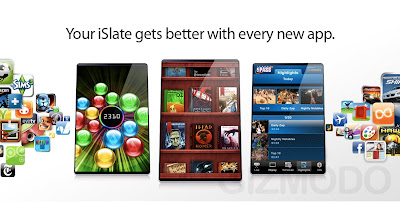
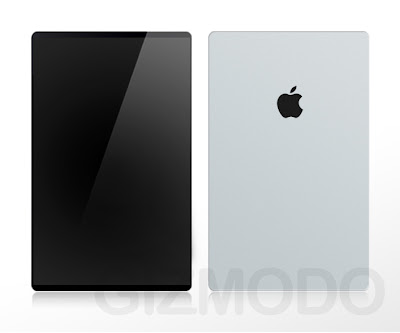

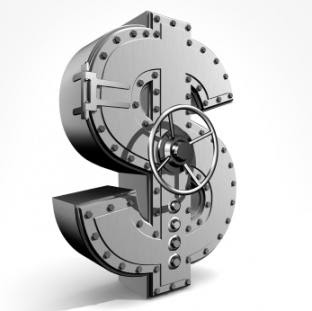

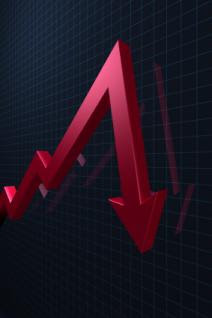



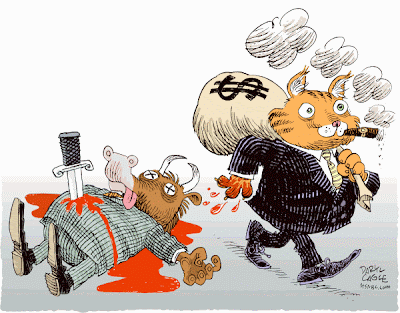


 A new patent application that was appeared this week in the U.S. Patent and Trademark Office’s database. Filed by Apple, the patent application is titled “Keystroke tactility arrangement on a smooth touch surface.” It describes a tactile-feedback mechanism for a touch surface keyboard to create physical bumps for the user to feel the keys.
A new patent application that was appeared this week in the U.S. Patent and Trademark Office’s database. Filed by Apple, the patent application is titled “Keystroke tactility arrangement on a smooth touch surface.” It describes a tactile-feedback mechanism for a touch surface keyboard to create physical bumps for the user to feel the keys. 





